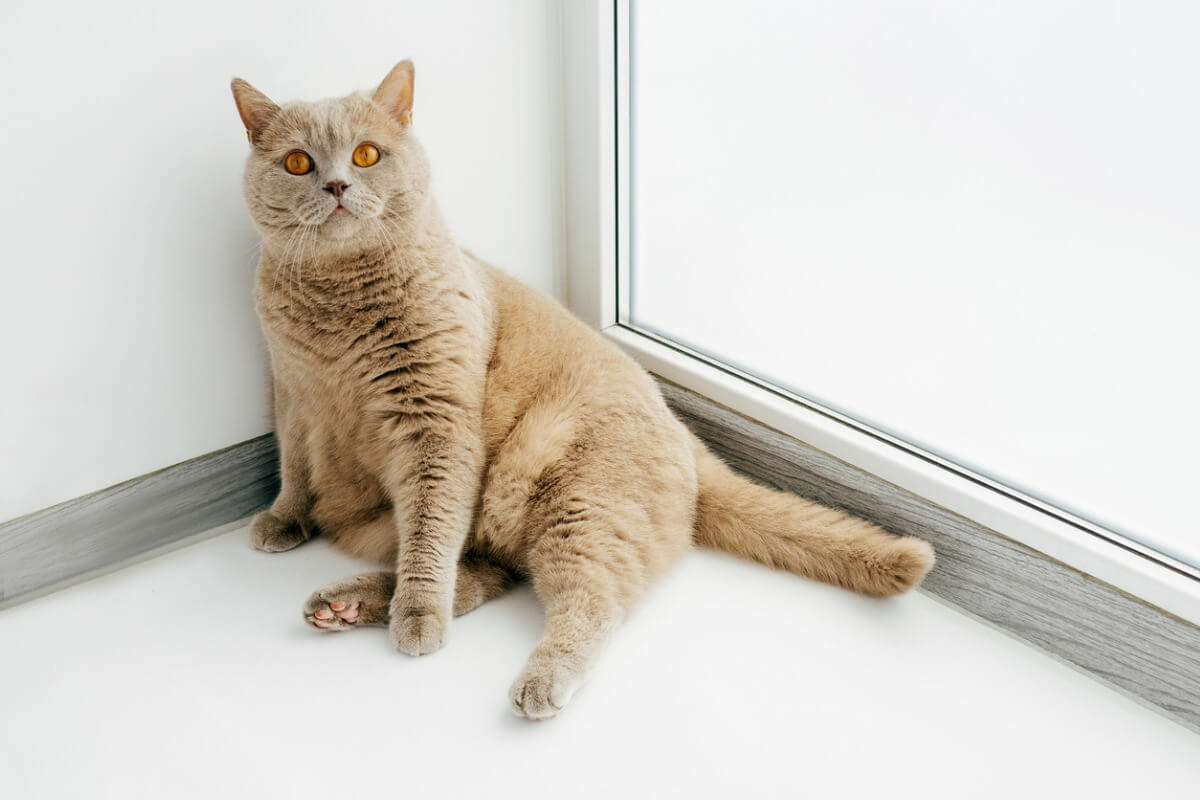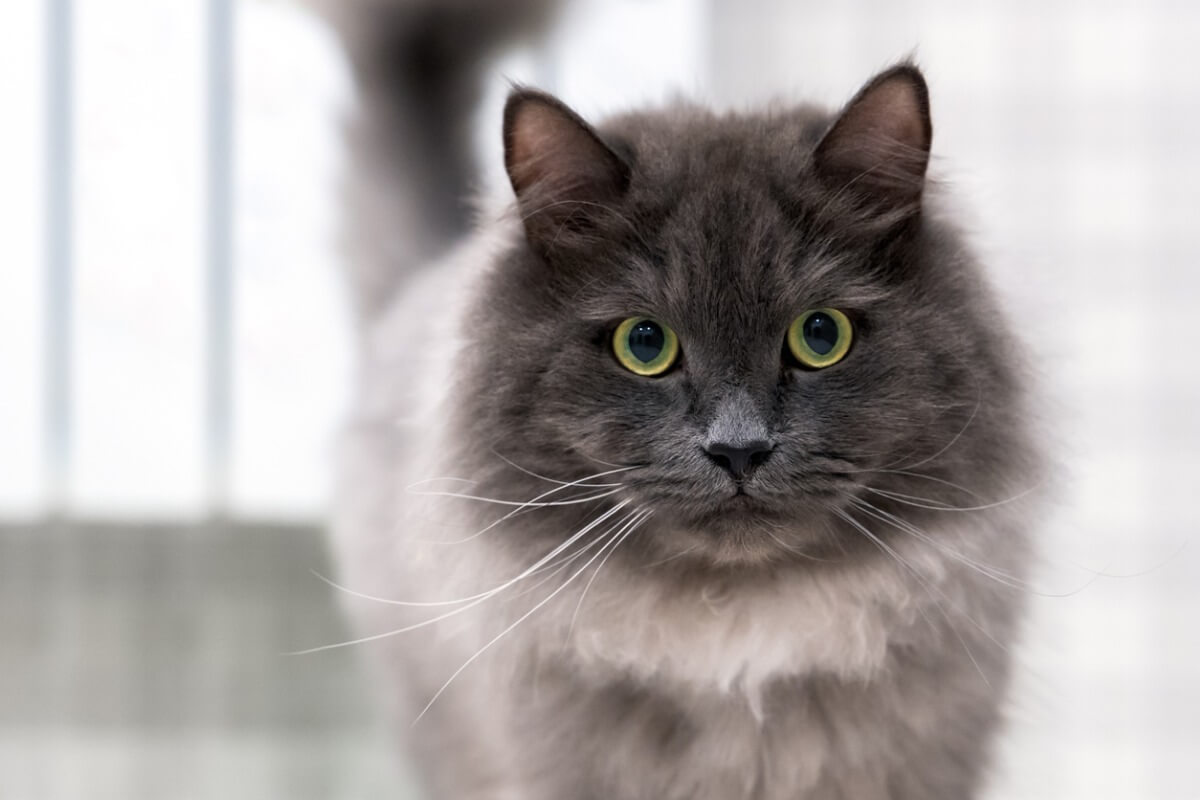The Breeds of Cats with the Fewest Diseases


Written and verified by the biologist Ana Díaz Maqueda
In general, the cat breeds with the fewest diseases are those that have undergone the smallest genetic selection process, in other words, those closest to the common European cat. Anthropic selection is what causes animals to suffer from congenital pathologies that, otherwise, wouldn’t appear in nature or would not reproduce.
Unlike dogs, the selection of cats when creating new breeds has always had an aesthetic purpose. Just as many dogs have bone and joint problems due to their physical form, this doesn’t happen with cats, with rare exceptions. In the following lines, we’ll talk about the breeds of cats that don’t usually carry genes that lead to diseases.
Cats with the fewest diseases
In most cases, the breeds of cats that have congenital problems have their origin in the breeder. People who are dedicated to breeding purebreds may be tempted to cross animals with known pathologies without caring about animal welfare or the people who will acquire the feline.
Thus, many breeds of cats tend to suffer from diseases, such as the typical hypertrophic cardiomyopathy in sphinx, ragdoll or Siamese cats. In fact, the Siamese cat may be the breed with the most inherited diseases, as it’s an old variety and widely crossed between members of the same family.
Therefore, when acquiring a purebred cat, it’s essential to know about the breeder and their reputation. Another problem for breeders is that, on occasions, they breed cats with viral diseases that aren’t detected at an early stage, but that sooner or later come out. This is the case with infectious peritonitis, calicivirus or herpesvirus.
At first glance, the animals that carry the viruses are totally healthy, but due to stress and other factors, diseases can develop. Everything would be solved if the breeders avoided breeding with sick animals. We’re now going to tell you about the breeds that have fewer illnesses.
European common cat
The most disease-resistant breed of cat is the common European. Although these felids can suffer from all pathologies like any other cat, as they are not subject to continuous human selection, there’s a lower probability that they’ll carry genes that cause disease.
In addition, the genetic variability they possess makes these cats almost immune to certain ailments or, at least, stronger ones.

British shorthair
Another fairly healthy breed of cat is the British Shorthair. This light gray feline has a more than acceptable life expectancy, exceeding 15 years. However, it may carry the gene that causes hemophilia B, a type of blood disease that causes clotting problems.

Chausie
Little known in Europe, the chausie cat breed is one of the strongest. According to the International Cat Association (TICA), the chausie is a natural cross between a jungle cat (Felis chaus) and domestic cats. This mixture increases genetic variability and, with it, resistance to disease.

Nebelung
The nebelung cat variety is also a breed with few health problems. Similar to the angora cat, but with a gray coat, the nebelung has a life expectancy of between 15 and 18 years.

What makes these breeds more resistant?
As we’ve said repeatedly, what makes a species stronger and more resistant to disease — as well as having a low probability of developing inherited diseases — is genetic variability.
All breeds of cats, like those of dogs, are born from crossing closely related individuals, that is, consanguineous breeds. This reduces genetic variability, and negative mutations accumulate over generations.
Animals that carry deleterious recessive alleles – a copy of the gene that’s only expressed when both alleles are recessive – can leave this legacy to their offspring. If two sister cats are crossed, the probability that these alleles end up in the same individual increases.
In other words, the new cat will have only recessive copies that will be expressed and, if they give rise to an illness, it and all its offspring will suffer from it or carry that “harmful” allele. This reduction in genetic variability leads to inbreeding depression, which drastically reduces the viability of a species or breed.
When crosses between cats occur randomly and the probability of reproducing with a relative is almost nil, the genetics of the species will improve. Similarly, it also increases your survival and overall health. For all these reasons, if you want a healthy feline, you’d better buy a common European specimen.
All cited sources were thoroughly reviewed by our team to ensure their quality, reliability, currency, and validity. The bibliography of this article was considered reliable and of academic or scientific accuracy.
- Malik, R. (2001). Genetic diseases of cats. Journal of feline medicine and surgery, 3(2), 109-113.
- Pesteanu-Somogyi, L. D., Radzai, C., & Pressler, B. M. (2006). Prevalence of feline infectious peritonitis in specific cat breeds. Journal of feline medicine and surgery, 8(1), 1-5.
- Gandolfi, B., & Alhaddad, H. (2015). Investigation of inherited diseases in cats: genetic and genomic strategies over three decades. Journal of feline medicine and surgery, 17(5), 405-415.
- Glaze, M. B. (2005). Congenital and hereditary ocular abnormalities in cats. Clinical techniques in small animal practice, 20(2), 74-82.
- Shelton, L. & Helmrich, H. (2006). HERITABLE DISEASES AND ABNORMALITIES IN CATS. Recuperado el 18 de junio de 2022, disponible en: http://catdnatest.org/pdf/heritable-diseases.pdf
This text is provided for informational purposes only and does not replace consultation with a professional. If in doubt, consult your specialist.